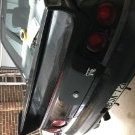Gtr Front Bar On Gtst
Announcements
-
Similar Content
-
Latest Posts
-
Yep, the closest base tune available was for the GTT, I went with that and made all the logical changes I could find to convert it to Naturally Aspirated. It will rev fine in Neutral to redline but it will be cutting nearly 50% fuel the whole way. If I let it tune the fuel map to start with that much less fuel it wont run right and has a hard time applying corrections. These 50% cuts are with a fuel map already about half of what the GTT tune had. I was having a whole lot of bogging when applying any throttle but seem to have fixed that for no load situations with very aggressive transient throttle settings. I made the corrections to my injectors with data I found for them online, FBCJC100 flowing 306cc. I'll have to look to see if I can find the Cam section. I have the Bosch 4.9 from Haltech. My manifold pressure when watching it live is always in -5.9 psi/inHg
-
Hi My Tokico BM50 Brake master cylinder has a leak from the hole between the two outlets (M10x1) for brake pipes, I have attached a photo. Can anyone tell me what that hole is and what has failed to allow brake fluid to escape from it, I have looked on line and asked questions on UK forums but can not find the answer, if anyone can enlighten me I would be most grateful.
-

1.thumb.png.36afd656b26d55f5d425fc76e21561f2.png)




Recommended Posts
Create an account or sign in to comment
You need to be a member in order to leave a comment
Create an account
Sign up for a new account in our community. It's easy!
Register a new accountSign in
Already have an account? Sign in here.
Sign In Now